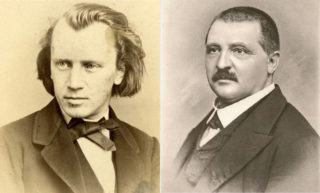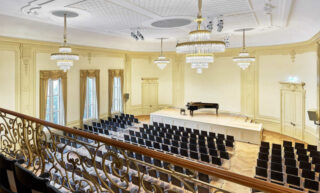Improvisation and acceptance
Sinfonieorchester Basel
1 and 2 September 2021
Ivor Bolton, Leitung
Gabriela Montero, Klavier
Rudolf Lutz, Orgel
- Rudolf Lutz - Präludium, Organ Improvisation
- Péter Eötvös - Dialog mit Mozart, Da Capo for Orchestra
- Wolfgang Amadé Mozart (1756−1791) - Concerto for piano and orchestra Nr. 24 c-Moll, KV 491
- Johannes Brahms - Symphony Nr. 3 F Major, op. 90
During the pandemic 2020/21 season many concerts had to be canceled. To remain in touch with its audience, the orchestra had to improvise. Events were dramatically limited in terms of length, number of musicians and the size of the audience, so that small-scale and digital events often had to be organised at short notice. Although the pandemic may not be fully over yet and the number of visitors could still be restricted, the program for the new season demonstrates the orchestra can’t wait to return in full force. Given what we learned in the past season, it feels appropriate to start the season with an improvisation. However, the real reason to invite the Swiss organist, improvisor and musical jack-of-all-trades Rudolf Lutz is the inauguration of the Musiksaal’s new organ.
In earlier times, improvising was a much more common part of classical music praxis than it is now. Bach, Mozart, Duruflé and others were known for their ability to improvise. The improvisation could be based on an existing theme or chord, or consist of completely new material. The best-known occasion for musicians to display their talents was the cadenza of a solo concerto, which was originally not written down, giving the instrumentalist the opportunity to freely improvise on the concerto’s musical material. However, by the time of Mozart it was not uncommon for the composer to write a cadenza for his own or other’s use. Mozart’s Piano Concerto No. 24 is an exception, probably because it was the composer himself who premiered the piece in Vienna in 1786. Brahms, himself a gifted pianist, who held this concerto in very high esteem, composed his own. In general, the soloist’s part of the original score of the concerto lacks detail, indicating that Mozart must have improvised not only in the cadenza, but also in many other parts.
The concerto is exceptional too for the fact that it is written in a minor key, c minor in this case. Although the minor key is most often associated with a mood of melancholy or pathos, the Mozart concerto is at times rather ominous. But then, Mozart is seldomly predictable. The famous British musicologist Tovey sums up it as follows: “Tell me that a mature […] work of Mozart is in a minor key, and I will confidently assert that […] it is very likely that much of the work will border on the sublime.” Brahms would have agreed.
Brahms’ Third Symphony, which concludes the concert, may be his shortest and least played, according to some it is also his finest. The piece met with great public success after its first performance, but it had its detractors too. Herbert Blomstedt, the youthful éminence grise of all conductors and a great admirer of the piece, quotes the late Hans Schmidt-Isserstedt, founder of the German NDR Orchestra, saying: “It is impossible to perform it, it ends pianissimo.” As a matter of fact, all movements end softly, depriving the audience of the opportunity to burst into tumultuous applause after a spectacular final climax. However, these climaxes are elsewhere woven into the musical fabric, which also contains immensely beautiful melodic lines.
The sense of acceptance the contemplative endings convey and the desire to cheer for our musicians again after a turbulent year are a suitable reflection of the state of mind most of us are in.
These English program notes have been published in the magazine of the Sinfonieorchester Basel.
Main photo by Lukas Howald.








Comments